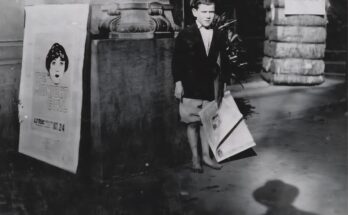Herman Eder was born in the town of Satu Mare, which was part of the Austro-Hungarian Empire at the time of his birth. Satu Mare, a culturally diverse town with a vibrant Jewish community, was home to generations of Jewish families who contributed significantly to the town’s spiritual, social, and economic life. Herman grew up in this environment, shaped by both the traditions of his Jewish heritage and the multicultural influences of Central Europe. His early life would have been marked by the tensions and upheavals that followed the collapse of the Austro-Hungarian Empire after World War I.
At some point in his adult life, Herman made the decision to emigrate to Belgium. This move may have been motivated by the political instability in Eastern Europe, the search for better economic opportunities, or the desire to escape growing anti-Semitism. Like many Jewish émigrés, Herman sought safety and a fresh start in Western Europe. Belgium, with its relatively liberal atmosphere and growing Jewish community, offered the promise of a new beginning. Herman became part of the Belgian Jewish population that worked, studied, and raised families in cities like Antwerp and Brussels.
However, that hope was shattered when Nazi Germany invaded Belgium in May 1940. With the occupation came a wave of oppressive anti-Jewish measures: registration, exclusion from public life, forced labor, and the eventual implementation of deportation orders. Jewish émigrés such as Herman were particularly vulnerable, having already fled persecution once, only to be caught again in the web of Nazi terror. The German authorities, aided by local collaborators, began systematically arresting Jews and preparing for mass deportations.
On 15 August 1942, Herman Eder was deported from the Mechelen transit camp—also known as the Dossin Barracks—which had been established as the central point for the deportation of Jews from Belgium. That date marked one of the earliest deportation transports from Mechelen to Auschwitz. These convoys were part of the Nazis’ broader plan to annihilate European Jewry through industrialized mass murder. Herman was forced onto a transport train under horrific conditions and sent to Auschwitz-Birkenau, the largest and most notorious Nazi extermination camp.
Upon arrival at Auschwitz, Herman was not among those immediately murdered in the gas chambers. Instead, he was registered as a prisoner in the camp—a process that involved the assignment of a number, the confiscation of all belongings, the shaving of hair, and the replacement of names with tattoos and records. This registration indicated that the Nazis intended to use him as forced labor. But life in Auschwitz was brutal and short-lived even for those who were not sent to the gas chambers upon arrival.
Auschwitz was a site of relentless violence, starvation, disease, and physical abuse. Prisoners endured inhumane conditions and back-breaking labor under the constant threat of death. Herman’s time in the camp lasted only fifteen days. On 30 August 1942, less than three weeks after his arrival, he perished. The precise circumstances of his death are not known, but like many others, he likely succumbed to the horrific conditions or was executed as part of the camp’s brutal regime. His death marked the end of a life uprooted by war, persecution, and unrelenting hatred.
Herman Eder’s story is one of displacement, survival, and tragedy. From Satu Mare to Belgium to Auschwitz, his journey reflects the fate of countless Jews who sought safety in exile only to fall victim to the expanding machinery of Nazi genocide. He is not just a name or a statistic—he was a man with a past, a homeland, and likely a family, all stolen by the Holocaust. His registration in Auschwitz is one of the few surviving records of his existence, a stark reminder of how meticulously the Nazis documented even their most inhuman acts.
Today, remembering Herman Eder is essential. His story adds to the broader mosaic of Holocaust history—a tale of a man who tried to rebuild his life in a new land but was ultimately consumed by the horrors that swept across Europe. Commemoration of victims like Herman ensures that their lives, however briefly recorded, are honored and never forgotten. In remembering Herman, we reaffirm our responsibility to protect human dignity and to ensure that such atrocities never happen again.


